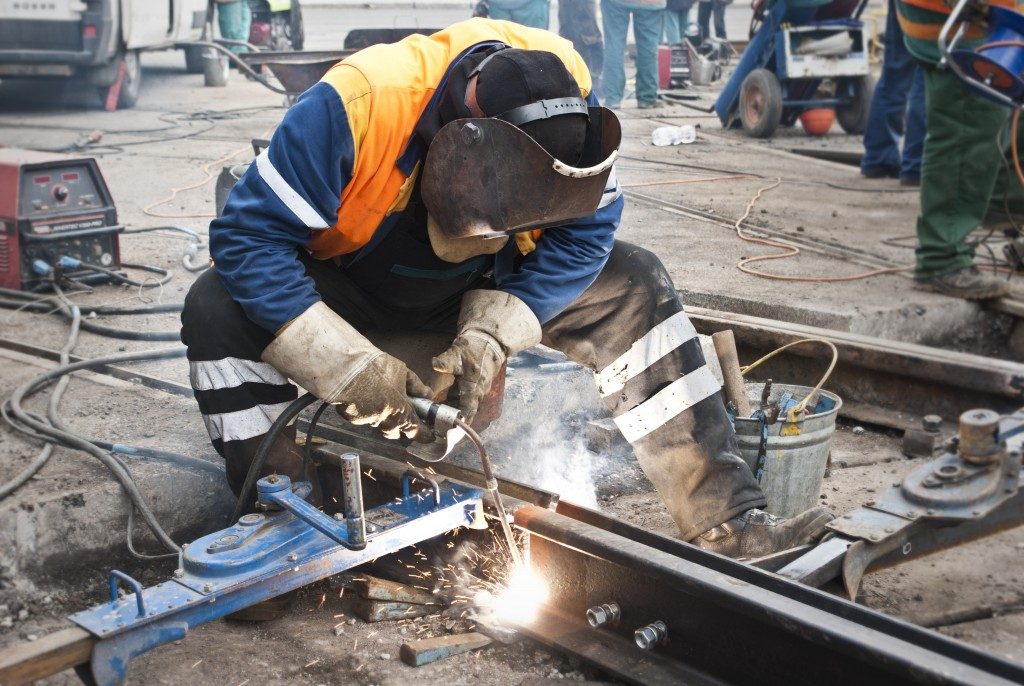Any form of welding, be it arc welding or blowtorch welding, involves heating metal to very high temperatures. Even though the heat is highly localized to minimize energy consumption, the chances of surrounding surfaces catching fire are still very high. Welding professional and hobbyists must first learn potential fire hazards and the safe practices that mitigate these risks.
This knowledge coupled with a handy tank sprayer could be all that is standing between you and a catastrophic fire.
What Causes Welding Related Fires?
Most welding fires are caused by:
- Sparks arching from the welding area
- Droplets of molten metal (hot slag)
- Torch flames
- Combustible material coming into contact with sufficiently hot metal
Your best shot at minimizing welding related fires is ensuring that the above never comes into contact with flammable materials. Strip off any plastic, paper or fabric from adjacent surfaces before you attempt to weld.
If you cannot sanitize the welding area, consider putting up some flame retarding shielding or welding from a different angle. The shielding could be a simple sheet of metal between the workpiece and the flammable surfaces you couldn’t get rid of.
Establish a Safety Perimeter and Direct Your Flames or Sparks There
Professional welders can easily place their welds such that all the debris or flames face a safe work area. This is a nifty trick that will save you time especially if you are working on small jobs. For instance, crawling under a car and welding such that the flame points outwards is safer than welding from the side and directing all the slug into unprotected parts of the car.
Always Keep the Work Area Clean

The other cause of welding related flames is all the clutter technicians leave lying around. A stray cardboard box, a trail of combustible oil, a piece of plastic, name it. All this clutter will turn even the most professional operation into a nightmare.
Clearing up your working space will not only make you more efficient but also reduce the chances of accidental tripping or misdirection of a welding jet. When at it, you can through a flame retarding cover over the floor to trap all the stray sparks and hot slag before it damages the floor.
Be Extra Careful When Working Near Flammable Vapors
If you are working around flammable gases, for instance near tanks or pipes that carry flammable liquids and gases, ensure that they are thoroughly drained and cleaned to reduce the chances of igniting the tank.
Some welders will flush the tank with an innate gas to flush away residual fumes while others will fill the inside of the tank with water – at least to the level they are welding.
Most welding hobbyists and professionals know how dangerous their craft is if not handled well. However, some get complacent after years and years of operating without any fires. Dropping your guard for even a minute could turn catastrophic. Doing everything by the book not only guarantees your safety but also ensures that your insurance covers your damages in case things go south.